Heard around Calabasas
Month: February 2012
Links for 2012-02-12 [del.icio.us]
- A Ship Adrift | booktwo.org
"Stuart Geiger puts this succinctly: “a non-vitalistic ethnography: an account of a culture devoid of life. Like with Latour and agency, once we show that life is not a necessary criterion for this thing called culture, then the fun really begins.” This is why I am increasingly pro-Artificial Life. It’s why I follow bots like my good friend Tim Robinson on Twitter, and why I am distressed when Twitter’s algorithms auto-wipe a slew of them from history; if we keep erasing them, how will they ever achieve sentience? It’s why @horse_ebooks is such a delight."
Just A Note: Design Fiction Is Not Design You'd Do Anyway + Motion Graphics
Just a thought and a note which is not an edict — just to say that Design Fiction can work as a way to have a thorough, sensible story that represents what could be. Yes, certainly it can. I’d argue that the work represented above called The Golden Institute and this other work called Super California: Forever Future by Sascha Pohflepp use Design Fiction to play around with what could have been and what could be in lovely, seductive visual narratives. Along with them go some fantastic exemplars and artefacts of those designed fictions. Those things — the artefacts and the films — are the design fiction itself. It’s more than the visual story, but the thoroughness of the stories with the artefacts that make them compelling and engaging. The films alone are great — but the projects come together in the coupling of the material with the visual documents.
There is a fine line between speculation in a way that throws things a bit off their track — gives some new, unexpected, perhaps illogical food for thought on a topic. The Golden Institute assumes that President Jimmy Carter’s ambitions for a comprehensive energy plan for the United States came to fruition. In the visual narrative we are given a documentary style government/corporate video of the plan and its possible outcomes. The objects help tell the story. Forever Future follows a rocket scientist as he explains how the hopes and ambitions for a future were not able to come about. He laments the failed ambitions but tirelessly archives new plans and new ambitions for future space programs — both those that succeed and those that feel.
The future when it arrives is more often than not as annoying, mentally stressful, mundane, boring and *blah as the present is. There’s lots to marvel about the today, about the present. But as much to ruefully shake one’s head about or decide — okay, this isn’t the future the zealous future pundits and moonbase architects said we’d get.
Okay. That may just be *me, but I prefer to think about what I consider truly novel, unexpected things rather than the same thing only done with a different brand on an existing object. That goes for failures as much as things that come to fruition, but often times in a different-than-expected form. Jet Packs exist — they’re just not commonplace or cheap or even safe. Doing Design Fiction is just as much about isolating unexpected outcomes — for example, the inevitable porn that will sustain any augmented reality future..it certainly won’t be mapping applications and city tours as the current augmented reality planners suspect to be that technology future’s economic lifeblood.
Doing Design Fiction as the normal, boring possibilities that are basically just visual narratives about the boring aspects of a new, provocative idea misses the grit and grime and disappointments and banality of most futures. That in my mind is closer to just doing traditional design — same stuff, different client; same stuff, only on the iPad instead of just the Web; same stuff, only with a different UI modality. Etc.
There are good reasons to use little films plus some motion graphics and, like..Mocha or SynthEyes or your favorite prosumer special effects package to make something look like it belongs in the scene and all that. I *get that. But in the case of doing normal design work, those little films are best suited to contributing to the refinement and iteration and exploration of a design project. It’s a perhaps more thorough way of figuring out how a UI should work because you have to go through the trouble of making a more resolved version than you might with static wireframes. That’s all. But, in this case — with due respect to what I am sure are fine, thoughtful, creative folks at Hotstudios — that ain’t Design Fiction in my book. That’s just good Design Prototyping with a little film.
Continue reading Just A Note: Design Fiction Is Not Design You'd Do Anyway + Motion Graphics
Week Quotes: 06022012
A new feature. I’m going to share the week’s quotes heard around the Advanced Design team studio here in Los Angeles. These come via the man with the ears for quotes, Luke Johnson who publishes them internally — or has been for the last few weeks now. They’re telling things, without telling things like — wooooo — secrets..And, they’re too good to let evaporate in the email-ether forever.
It’s a a yes week.
If I see something like a cake that’s not cut straight, I need to correct it.
Why can’t there be a Chief Emotional Officer?
I just laser cut leather, so if you smell burnt flesh…
(In snowboarding) It’s always, you should have been here yesterday…classic.
The night before a race I used to have a quiet moment with my bike. Now it’s on a hook.
8 hours, no tricks.
You look like a stylish young accountant.
That’s like the founding fathers saying “My signature looks bad, let’s start over.”
It’s funny, MP3 seems to be a dirty word now.
I am still having trouble understanding why we are interested in music and place.
Boring can be beautiful.
Tweaks are hard to value, especially in a big group.
This picture was taken in Scandinavia, in the summer, obviously.
The big picture will come by designing.
I don’t think there’s any real value in opening up kimonos yet.
I don’t read Luke’s email.
Weekending 05022012
In Geneva, where the cold winter is striking back, the week had been, for once!, very quiet with data analysis (head-mounted display project) and book writing (game controllers!). We’re also preparing two workshops for the upcoming Lift12 conference. The first one is about location-based games organized with Mathieu Castelli, who used to be the founder of New Game, a pionneer in this domain (they released Mogi, one of the first commercial LBG). The session will consist in a series of group activity based on Meatspace Invasion, a location-based game recently developed by C4M and Mekensleep. After a quick introduction about these, we will form groups who will test different combinations of game parameters. We will then go on the field in Geneva to test these scenarios and regroup after the game session to debrief the outcomes. The second workshop is organized with the friends from Superflux (Anab Jain and Justin Pickard). It’s called “Foresight suprise” and as the name indicates, I won’t tell much about it except that it’s going to be about futures and futurescaping.
Hi. It’s Julian. In Los Angeles last week we got back the PCBs for Ear Freshener. One thing that was wrong is I mucked up the holes for the little audio card that plops onto the controller card. It won’t go all the way through, but it’s fine for testing. I’ll also be trying out these PCB stencils for the solder paste process The entire week was devoted to audio design and prototyping and team wrangling, I’d say. Nick Foster was in the studio for the last few days of the week so we had time for planning the project, eating tacos, working on the future of the whoopie cushion and the like.
It was actually a bit of an existential week for the audio project insofar as I had to figure out what the fuck was up with a bit of anxiety I felt during the previous weekend’s bike ride. I don’t like anxiety on bike rides. It was best summed up as a consideration as to new team configurations and advanced design team best practices. The conclusion? In this particular Advanced Design team a few things happen. First, we are asked to put eyes on an existing project and help make it better than it would’ve been were it not possible to have an experienced team of thoughtful designers who are comfortable working in an unstructured. We are asked to work on new, emerging things that are being done in a traditional structured way. And we are expected to come up with new things. I’ve come to the conclusion that we treat the “asks” — the things that come from outside — with more urgency than the latter projects — the things where we’re expected to come up with new things. It seems that we respond to the “battle stations” klaxon as if it matters more than the things we believe in first. Those things disappear into the closet and desk drawers. Which felt a bit like self-loathing in a really horrid way. Like — when someone *else says jump, we jump. When we believe in something enough to jump, we sorta *shrug. Or put it to the side when a “client” asks for something from us, *even *when *we *don’t *believe in it.
(Although, have to say — not believing in something someone else is doing is often a great opportunity to collaborate to make it better and believable. Not to be too normative about it, but there are plenty of things that seem like lovely fancy door knobs with awesome new mechanics and latching technologies that someone will bring to us and basically ask — what sorta house do you think this should go on? And the problem is that the door knob was thought of without really thinking about either the house..or the people who might have to use the door knob and, pray — live in the house. That’s the curse of the technologists and accountants/business people and the opportunity for more collaboration with design from the get-go.)
I hope to correct this through the audio project because otherwise — what’s the point?
So, I’m treating this quite as if someone from somewhere else came down and “made” the team get to work. Which effectively they did. The team will consist of folks who can commit the majority of their time to the project — it’ll run short and sharp and be quite deliberate. Sorta no nonsense; no whining. Polite..but ruthless.
This week in Barcelona has been almost exclusively dedicated to Quadrigram performing some interface polishing and documentation tweaking with the help of Tim Stutts and Brava Büro. In the backstage, the pipes and wires are gently coming into place with some mind blowing resulting reaching the frontiers ‘Quine computing‘. All this will make sense in the near future.
I also took some time to step back and order my thoughts for an upcoming talk at Strata that will focus on our approaches and tools to work with network data. This week, I will test and rehearse a first iteration responding to the invitation to our friends at Claro Partners.
I will use our study hyper-congestion at the Louvre as one case study. A work that was actually featured yesterday in the newspaper El Periodico as a consequence of Yuji presenting some results in Sweden last week.
Finally, our measures of mobile phone network activity in Geneva have led to some beautiful visualizations and animations produced by Interactive Things. Keep your eyes wide open if you happen to stroll around the Geneva main train station during Lift12.
The iPod Time Capsule – Notes on Listening + Time + Design of Things That Make Sound
Over the week’s end I was in the back studio tearing down and rebuilding the wall of photos for the Hello, Skater Girl “side” book project. I was tasked with this particular endeavor by the guy I hired to do the book design. I knew I’d have to do it all along which is why I had put up sound board many, many months ago.
It was going to be an all-afternoon-into-the-evening effort, which is fine. Making a book is hard fun work. I needed music but I didn’t want to suffer the tyranny of choosing or even curating a list of things. I just wanted music to come out of the stereo.
And then I remembered — I have my old dear friend’s ancient 2004 iPod. She gave it to me when she upgraded and I’ve never even looked at it. It’s just followed me around from city to city and house to house. There it was.
I plugged it in and it booted up just fine. And then I just pressed play and got to work.
It was a sea of past era music. Not super past — early 2000s. Perfectly fine. Some songs I may not have chosen. Some songs I didn’t know. Whatever. It was somewhat enthralling to realize I was listening to a frozen epoch of sound, incapsulated in this old touch wheel iPod. I sorta wish I had my original iPod. As it is, I still use my 80gb model, although that’s becoming a bit obsolete as a device in this era of having all-the-music-in-the-world-in-the-palm-of-your-cloud-connected-device.
I find it a bit incredible that this thing still works. I mean, it’s a hard drive with a little insect brain — so there aren’t firmware drivers to suffer incompatibilities with a future it was never destined for. Even though it has become obsolete in the consumer electronics meaning of obsolete — it can still work and sound just comes out of it the way an audio device should function.
That’s significant as a principle of audio and sound things, so I’ll say it again sound just comes out of it — and it does. The old trusty 3.5mm jack delivers amplitude modulated signaling in a way that is as dumb as door knobs — and that is as it should be. Not every signal should or needs to be “smart”..just like every refrigerator need not be smart. It’s back to basics for very good reason, I would say. (Parenthetically, I’ve been assaying a fancy new mixed-signal oscilloscope which can take an optional module to specially handle audio signaling — there are audio processing…)
What’s the future of that for the collective of things? How many things will work beyond their time? What are the things that won’t need an epic support system of interfaces, data, connectivity to *just work* after their time in the light? What of the cloud? When it breaks, grows old, has an epic failure that makes us all wonder what the fuck we were thinking to put everything in there — will my music stop coming out of my little boxes?
As I pinned up lots of little photos and every once and again checked the iPod to see what was playing, I thought about some stuff related to the design of audio and design of things that make sound.
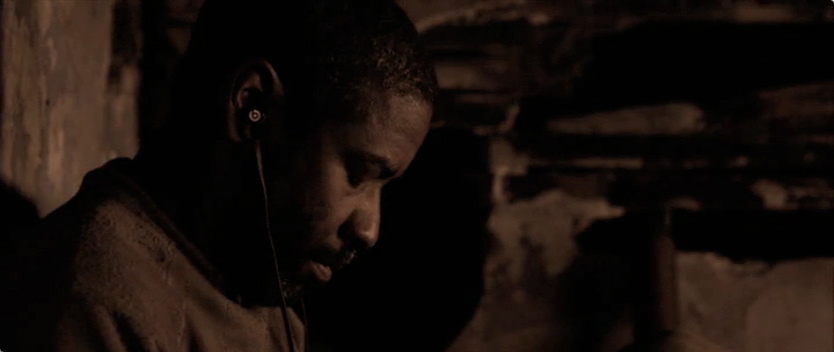
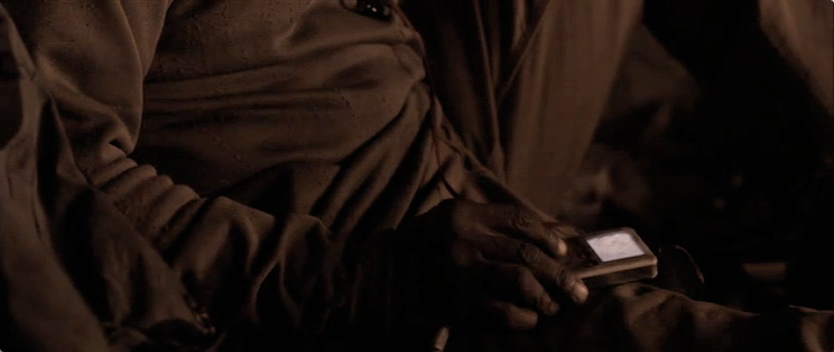
iPods and music players generally are great single-purpose devices from the perspective of their being time capsules of what one once listened to. You’ll recall the role the iPod played in the apocalyptic tale “The Book of Eli” — it becomes a retreat to a past life for the the messianic title character. And despite the end of the world (again) the device will still work with a set of headphones the (potentially unfortunate) propriety dock connection and means to charge it through that dock connection. Quite nice for it to show up as a bit of near future design fiction.
What will happen to the list of music, which already seems to be a bit of a throw-back to hit parades and top 100s sorts of thigns. Those are relics from the creaky, anemic, shivering-with-palsy, octogenarian music industry which gave you one way to listen and one thing to listen to — broadcast from the top down through terrestrial radio stations that you could listen to at the cost of suffering through advertisements.
Now music (in particular, lets just focus ont that) comes from all over the place, which is both enthralling and enervating. Where do you find it? Who gets it to you and how? How do you find what you don’t even know is out there? Are there other discovery mechanisms to be discovered? Is this “Genius” thing an algorithmic means of finding new stuff — and who’s in charge of that algorithm? Some sort of Casey Kasem AI bot? Or the near future version of a record play graft scam? Or do we tune by what we like to listen to?
And despite the prodigious amount of music on this flash-frozen iPod from some years ago — now kids are growing up in a world in which many orders of magnitude *more music is available to them just by thinking about it..almost. It’s all out there. Hype Machine, Spotify, Last.fm, Rdio, Soundcloud..in a way YouTube — new music players and browsers like Tomahawk, Clementine — whatever. These new systems, services, MVC apps or whatever you want to call them — they are working under the assumption that all the music that is out there is available to you, either free if you’re feeling pirate-y or for a 1st world category “small fee” if you want to cover your ass (although probably still mug the musicians.) The licensing guys must be the last one’s over the side on this capsizing industry.
Listening rituals must be evolving as well, I’d guess. Doing a photography book about girl skaterboarders means that you end up hanging out with girl skateboarders and you end up observing what and how they listen to music. What I’ve noticed is that they do lots of flipping-through. They’ll listen to the hook and then maybe back it up and play it again. And then find another song. It’s almost excruciating if it weren’t an observation worth holding onto. I wonder — will a corner of music evolve to nothing but hooks?
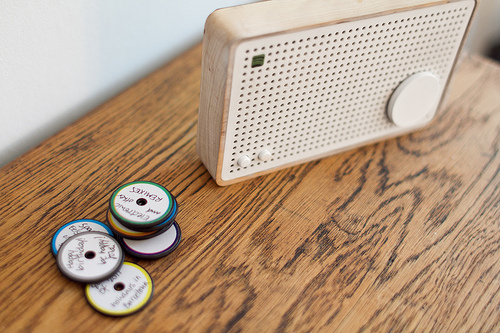
Spotify Box project on IxDA awards thing is interesting to consider. I love the way the box becomes the thing that sound just comes out of. And the interaction ritual of having physical playlists in those little discs is cute. The graduate student puppy love affair with Dieter Rams is sweet in an “aaaahhh..I remember when..” sorta way. It’s a fantastic nod to the traditions and principles of music. And the little discs — well, to complete the picture maybe they should be more evocative of those 45 RPM adapters some of you will remember — and certainly plenty of 23 year old boys with tartan lumber jack flannels and full-beards are discovering somewhere in Williamsburg or Shoreditch or Silver Lake. They’ll love the boo-bee-boo sound track that the project video documentation comes with. Great stuff. Lovely appearance model. For interaction design superlativeness — there’s some good work yet to be done.
Okay. So…what?
It is interesting though to think of the evolution of things that make sound. And I suppose there’s no point here other than an observation that lists are dying. I feel a bit of the tyranny of the cloud’s infinity. If I can listen to *anything and after I’ve retreated to my old era favorites — now what? The discovery mechanisms are exciting to consider and there’s quite a bit of work yet to be done to find the ways to find new music. It definitely used to be a less daunting task — you’d basically check out Rolling Stone or listen to the local college radio. Now? *Pfft. If you’re not an over eager audiophile and have lots of other things to do — you can maybe glance around to see what friends are listening to; you could do the “Artist Radio” thing, which is fine; you could listen to “artist that are like” the one you are listening to. Basically — you can click lots of buttons on a screen. To listen to new music, you can click lots of buttons on screen. And occasionally CTRL RIGHT-CLICK.
Fantastic.
In an upcoming post on the design of things that make sound, we’ll have a look at the interaction design languages for things that make sound.
Before so, I’d say that clicking on screens and scrolling through linear lists have become physically and mentally exhausting. Just whipping the lovely-and-disruptive-at-the-time track wheel on an old iPod seems positively archaic as names just scrolled by forever. The track wheel changed everything and made the list reasonable as a queue and selection mechanism.
But, can you imagine scrolling through *everything that you can listen to today? What’s the future of the linear list of music? And how do we pick what we play? What are the parametric and algorithmic interaction idioms besides up and down in an alphabetically sorted list of everything?
Good stuff to chew on.
More later.
Why do I blog this? Considerations to ponder on the near future evolution of things that make sound and play music in an era in which the scale of what is available has reached the asymptotic point of “everything.” What are the implications for interface and interaction design? What is the future of the playlist? And how can sound things keep making sound even after the IEEE-4095a standard has become obsolete. (Short answer — the 3.5mm plug.)

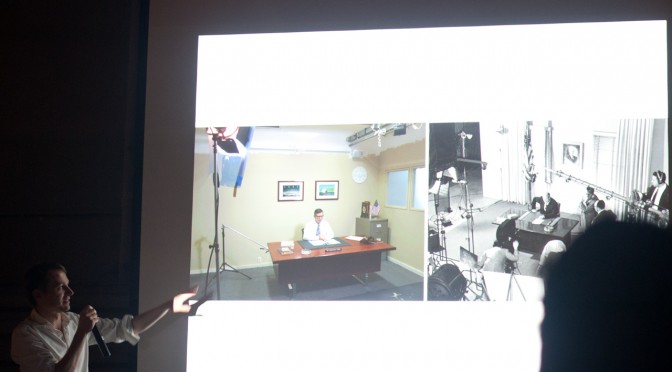
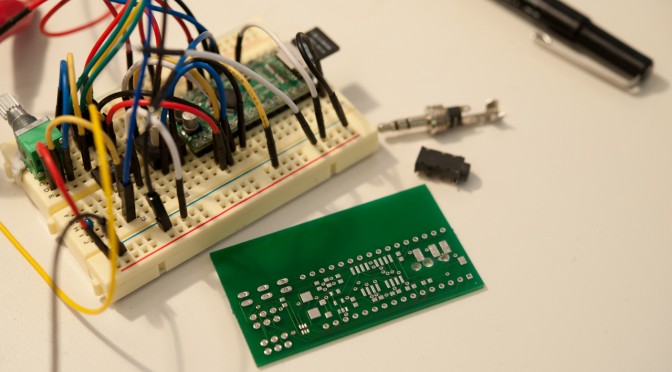
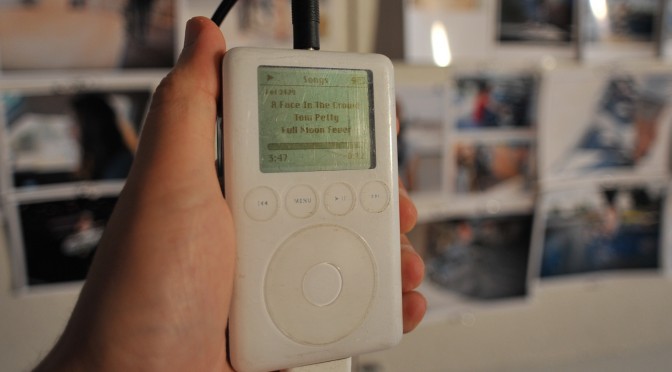
You know I was just joking. I do read your emails.
Duncan’s not here, everyone take the week off.
I’ll be working with Jessica on hazardous waste.
Didn’t Hannibal Lector work in anagrams?
Every man goes through a beer making stage.
Germans are used to dubbing.
Do you believe there is an opportunity?
I always believe there is an opportunity. That’s why we are here.
Our target audience is effervescent, young, appreciates design, hyper connected, and pre-family. If you have a child that sticks you over the edge.
Did he come in with Victoria?
Pre-Victoria.
That’s not overly inspirational but that’s reality.
There is no good way for a man to ask another man if they want to go get yogurt.
What is the value to people? What problem are we solving?
There’s a scene in Batman and Robin where they cover their stomaches in buttermilk…
It’s so quiet. It’s like everybody took the day off.
Music Heard in the Studio
Wayward Angel by Ronnie Earl & The Broadcasters
Baby One More Time by Britney Spears
Somebody That I Used to Know (feat. Kimbra) by Gotye